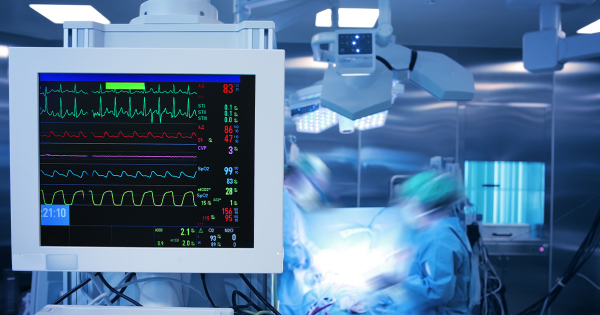PFAS: Addressing Compliance Challenges for Medical Device Manufacturers

Per- and poly-fluoroalkyl substances (PFAS) are a class of synthetic chemicals widely used in various industries, including healthcare. However, concerns about the persistence and potential adverse effects of PFAS have led regulatory bodies, particularly in the Eurozone, to implement restrictions and deadlines for their elimination.
This blog post aims to provide a comprehensive guide for medical device manufacturers, addressing the compliance challenges posed by PFAS regulations. It also explores the identification of PFAS usage, assessment of alternative options, management of PFAS-related technologies, and mitigation of associated risks in the medical devices industry.
Compliance-led Changes in Medical Device Product Development
PFAS play a crucial role in healthcare due to their chemical and heat resistance, lubrication, and biocompatibility properties. They enhance the functionality of devices such as catheters, surgical tools, and in-vitro diagnostic (IVD) equipment ensuring high performance, durability, and safe interaction with the human body. However, considering the environmental and health concerns associated with PFAS, their responsible usage remains essential.
The recent regulations and standards are centered around the responsible usage, handling, and disposal of PFAS within medical device manufacturing, healthcare facilities, and related sectors. These regulations aim to ascertain that medical products and processes are free from PFAS or, if used, adhere to guidelines. This ensures patient safety and environmental protection without compromising the high standards of medical device performance and patient care.
The key aspects of the regulations include:
Identification and Assessment
Medical device manufacturers and healthcare facilities must identify and assess the presence of PFAS in their products, equipment, and processes. This includes conducting comprehensive evaluations of the materials used such as coatings, adhesives, and water-resistant components.
Usage Restrictions and Substitution
Regulatory agencies may impose restrictions on the use of specific PFAS chemicals in medical devices and related products. Companies must ensure compliance with these restrictions and explore viable alternatives that offer equivalent performance without using PFAS.
Supply Chain Management
Medical device manufacturers should work closely with their suppliers to verify the absence of PFAS in raw materials and components. This requires implementing robust supply chain management practices and maintaining transparency throughout the production process.
Environmental Monitoring and Waste Management
Healthcare facilities need to monitor and manage PFAS contamination to prevent their environmental impact. This may involve implementing proper handling, storage, and disposal protocols for PFAS-containing waste, as well as regular environmental monitoring to ensure compliance with set limits.
Reporting And Documentation
Compliance with PFAS regulations requires maintaining accurate and up-to-date records of PFAS usage, generated data, and waste disposal. Detailed documentation facilitate transparency and helps demonstrate compliance to regulatory agencies.
Ongoing Regulatory Monitoring
Given the evolving nature of PFAS regulations, medical industry stakeholders must stay informed about new requirements, guidelines, and research related to PFAS. This entails actively monitoring regulatory changes, engaging in industry associations, and participating in discussions on best practices for PFAS compliance.
PFAS Compliance Made Easy
While reducing the use of PFAS is necessary for the healthcare industry, finding alternative materials that possess similar properties comes with its own share of challenges. It can lead to supply chain disruptions and balancing the associated costs and extensive research with the overarching goals of patient safety and infection control can also be a matter of concern. Navigating the complex landscape of regulatory compliance adds another layer of complexity. The key is to find a partner that can help with this transition.
L&T Technology Services (LTTS) understands the compliance challenges faced by medical device manufacturers concerning PFAS regulations. With diverse expertise in material testing and design analysis, LTTS offers comprehensive solutions for medical devices companies to seamlessly transition to PFAS-free products. LTTS’ services demonstrate the commitment to assisting manufacturers in this transition and achieving PFAS compliance. They include:
- Collaborating with manufacturers to identify and confirm the presence of PFAS in their product portfolios, facilitating effective responses during public consultations.
- Conducting comprehensive chemical composition analysis to determine the extent of PFAS usage in medical devices, enabling manufacturers to make informed decisions.
- Collecting and collating previously submitted responses from various stakeholders and providing manufacturers with valuable insights to enhance the comprehensiveness of their responses.
- Ensuring manufacturers' responses align with the guidelines provided by the European Chemicals Agency (ECHA), assisting in the preparation of comprehensive public comments.
- Gathering additional information required by ECHA guidelines, including social and economic impact assessments, PFAS usage estimates, and exploration of recycling or disposal mechanisms.
- Drafting public comments for Annex-XV, ensuring compliance with specific regulatory requirements.
- Partnering with accredited test labs specializing in material testing to accurately verify the presence and concentration of PFAS in medical devices.
- Conducting a thorough analysis to evaluate alternative materials and their impact on device design, ensuring compliance without compromising product performance.
- Ensuring regulatory compliance for medical devices during changes to materials, components, or designs through support in assessing, documenting, and submitting regulatory information.
Why LTTS?
LTTS has a proven track record of helping medical device manufacturers overcome compliance challenges. Highlights include:
Overcoming Challenges in Surgical Devices: Achieving REACH Compliance
LTTS supported a customer in identifying hazardous chemicals in their surgical devices marketed in Europe. Through extensive collaboration and analysis, LTTS improved product safety, streamlined documentation and coordination processes, and facilitated REACH compliance.
Obsolescence Management and RoHS Compliance for Urine Monitor: Innovation without Compromising Form Factor
LTTS assisted a customer in redesigning obsolete boards and non-RoHS-compliant components in a urine monitor without altering its form factor. With gap analysis, design modifications, and testing, LTTS ensured RoHS compliance, improved product performance, reduced thickness, enhanced connectivity, and achieved a 10% cost reduction per unit.
Compliance for Microbiology and Hematology Instruments: Achieving RoHS-3 Certification
LTTS helped a customer evaluate and convert over 10,000 components of microbiology and hematology instruments to meet RoHS-3 directive requirements. Through BOM scrubbing, alternate part documentation, and supplier collaboration, LTTS ensured effective obsolescence management, streamlined documentation processes, and helped achieve RoHS-3 compliance.
For more information, please download the flyer.




